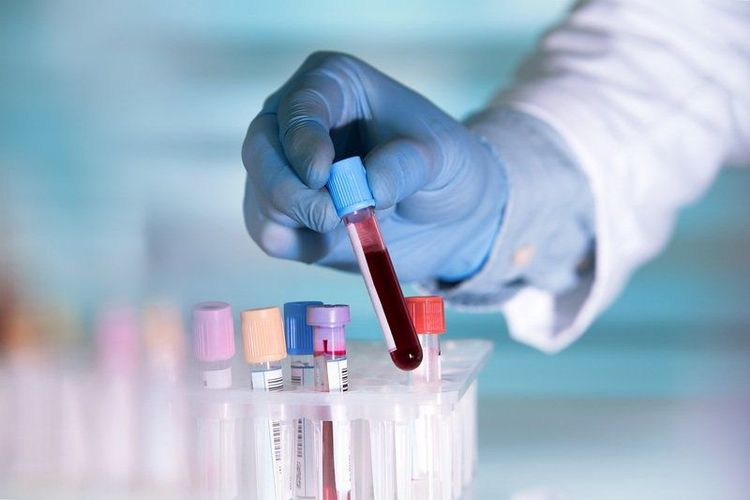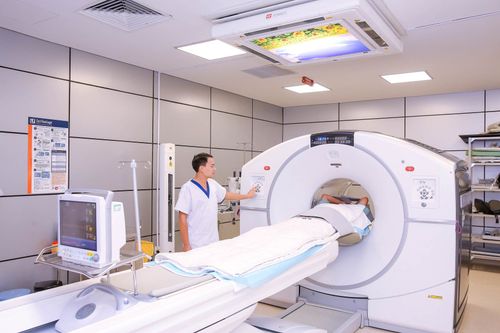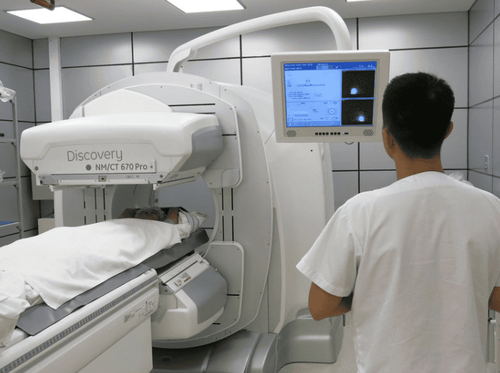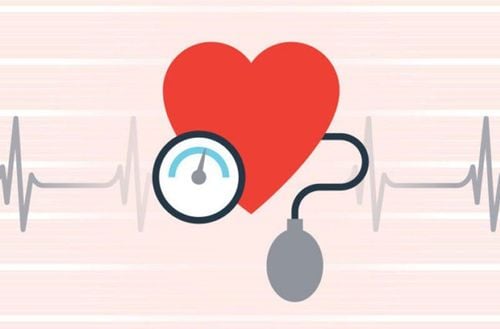This is an automatically translated article.
Ionizing radiation originates from external radioactive sources such as gamma rays, X-rays or from radioactive isotopes that are introduced into the body for the purpose of treating disease. Radiation exposure occurs when the concentration of ionizing radiation rays entering the body exceeds the safe level, causing serious health effects and leading to other dangerous diseases.
1. The ability of radiation rays to penetrate the body
Ionizing radiation includes high-energy electromagnetic waves such as gamma rays, X-rays... and particles such as beta particles, alpha particles, neutrons... In which the ability to affect and penetrate the body of each type of radiation is different:
Alpha particles: Emitted by highly atomic radionuclides (uranium, radium, plutonium). The ability of this particle to penetrate through the skin does not exceed a depth of 0.1mm from the surface of the skin. Beta particles: Emitted by unstable radionuclides (iodine – 131, cesium – 137). The ability to penetrate through the skin of this grain is from 1-2cm from the surface of the skin, causing damage to the epidermis, the sub-epidermal layer. Neutron Particles: Produced in nuclear fission reactions and also emitted by some radionuclides (californium-252). Radiation exposure caused by this particle can penetrate the skin to depths ranging from a few millimeters to several tens of centimeters. Gamma rays and X-rays are electromagnetic radiation with short wavelengths and high energy. This type of ray is capable of penetrating deep into tissues in the body to a depth of many centimeters. With these properties, alpha and beta particles are most likely to cause damage in people exposed to radiation, especially in cases of internal radiation. X-rays and gamma rays have the potential to cause acute radiation syndrome (ARS) and cause damage at long distances from their source.
The degree of damage of ionizing radiation is determined according to the intensity and dose of radiation causing damage, in which the unit of measurement of radiation intensity is conventionally sievert (abbreviated as sv) or gray (abbreviated as Gy).
2. Types of radiation exposure
Radiation exposure can be caused by irradiation or radioactive contamination. The characteristics of these types of exposure are as follows:
Irradiation: The patient is exposed to radiation due to exposure to radiation. Radiation can infect the whole body or just some organs (for example, when using radiation therapy in cancer treatment, radiation can cause damage to organs. target during treatment), where large doses of radiation can lead to radiation syndrome and systemic symptoms. Radioactive contamination: People are exposed to radiation through unintended exposure to radioactive substances, such as dust or liquids. This form of radiation exposure can occur inside or outside the body. Extracorporeal radiation occurs because radioactive substances stick on the skin, clothes ... through rubbing, contact and then harm the body. Radiation in the body occurs from eating, breathing in radioactive substances and is more difficult to remove than external radioactive contamination.

Rụng tóc là biểu hiện của người bị phơi nhiễm phóng xạ
3. How dangerous is radioactive contamination?
Ion radiation causes direct damage to DNA and RNA molecules. Accordingly, DNA and RNA molecules slow down in cell division and in large doses of radiation can lead to cell death. The effect of radiation is different for each cell type, in which undifferentiated cells or cells with high mitotic capacity such as stem cells, cancer cells ... will be vulnerable to damage. injured by radiation.
Patients with radiation exposure in the early stages (the stage of radiation exposure) often have no typical symptoms, only to the stage when a large part of the body's cells are destroyed by the new radiation disease symptoms appear.
The sensitivity of cell types to radiation decreases in the following order: Lymphocytes, stem cells, bone marrow proliferative cells, intestinal epithelial cells, epidermal stem cells, liver cells... Besides, the level of damage of the radiation depends on the intensity and duration of the effect. In many cases, people infected with radiation only appear lesions on the body when the radiation intensity exceeds 1sv.
Some subjects are more sensitive to radiation exposure as follows:
Children; Homozygous people cause ataxia - vasodilatation syndrome; Diabetic patients; People with connective tissue disease.
4. Manifestations of radiation exposure
Some symptoms that people exposed to radiation may experience are as follows:
Nausea, vomiting: It is considered a typical symptom of the early stages of radiation exposure. The greater the intensity and the greater the amount of radiation, the sooner symptoms of nausea and vomiting appear. Patients with this symptom after being exposed to radiation are very likely to die. Bleeding without a cause: Bleeding symptoms such as nosebleeds, bleeding gums, oral cavity, internal organs and even vomiting blood ... Passing out blood: The rapid growth of blood Radioactive cells irritate the intestinal wall and can lead to bloody stools. Flaky skin: Areas of skin exposed to radiation are at high risk of burning, blistering, reddening, and damage similar to being exposed to the sun for too long. Hair loss: Radiation exposure damages hair roots, hair roots. In the case of a large amount of radiation exposure, the patient may experience a large amount of hair loss in a short time. Fatigue: The body is tired, weak quickly, the amount of red blood cells in the blood decreases, which can lead to anemia, increasing the risk of coma. Sorethroat. Ease of inflammation: The effect of radiation reduces the number of white blood cells in the body, leading to a weakened immune system and susceptibility to inflammatory diseases.

Xét nghiệm tổng phân tích tế bào máu chẩn đoán nhiễm phóng xạ
5. Diagnosis of radioactive contamination
Diagnosis of people infected with radiation is based on exposure history, clinical symptoms and results of laboratory tests. In which, the time of symptom onset, time of progression and the results of subclinical tests will help doctors determine radiation dose and classify patients according to the extent of radiation effects.
Laboratory tests should be performed as follows:
A complete blood count test repeated after 24, 48, and 72 hours helps to compare the difference in lymphocyte counts after exposure to assess disease prognosis and estimate radiation dose. The serum amylase level test results in a time-dependent increase in radiation dose. Inflammatory response protein (CRP) test: The results show that CRP levels increase with radiation dose; Increased levels also help distinguish between lightly exposed patients and severely exposed patients. Blood citrulline concentration test: It is meaningful to assess the damage on the gastrointestinal tract when blood citrulline levels decrease. Fms Tyrosine kinase - 3 (FLT - 3) ligand concentration test: It is meaningful to evaluate the damage to the hematopoietic organs. Interleukin-6 concentration test: Concentration increases at large doses of radiation. Test G - CSF (granulocyte colony-stimulating factor): Concentration increases at large doses of radiation. Cytogenetic assay with overdispersive index. In case of suspected radioactive contamination due to contamination, the patient should have the whole body examined with a short Geiger - Muller window fitted with a survey watch to determine the location and level of radiation contamination outside the body. . Besides, to detect internal contamination such as ears, nose, mouth... proceed to wipe each position with a clean towel and check with a counter.
In summary, radiation exposure is an extremely dangerous condition, causing serious health effects and leading to dangerous diseases such as blood cancer, acute leukemia, and prostate cancer. thyroid... The level of damage of ionizing radiation is determined according to the intensity and dose of radiation causing damage.
Please dial HOTLINE for more information or register for an appointment HERE. Download MyVinmec app to make appointments faster and to manage your bookings easily.













